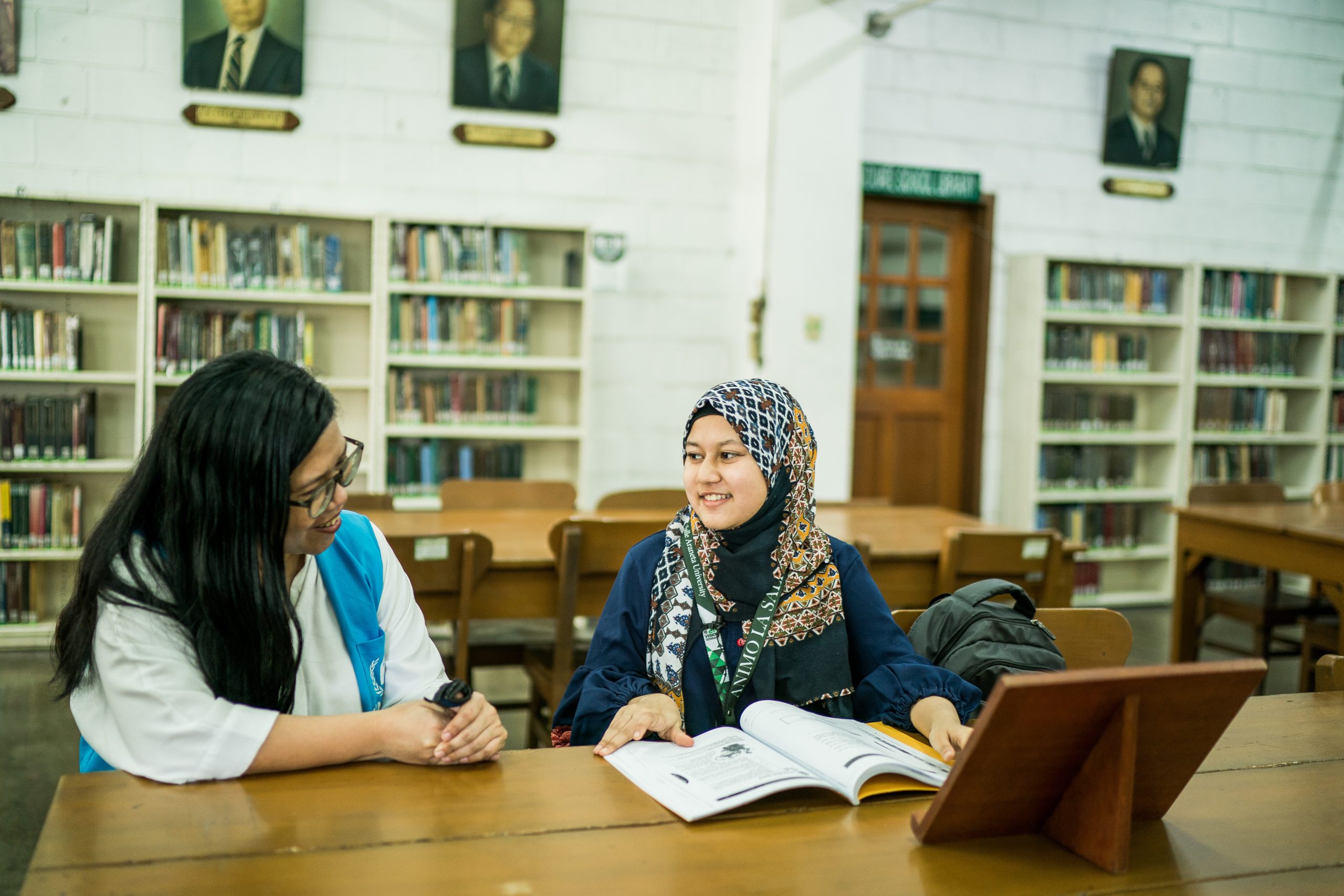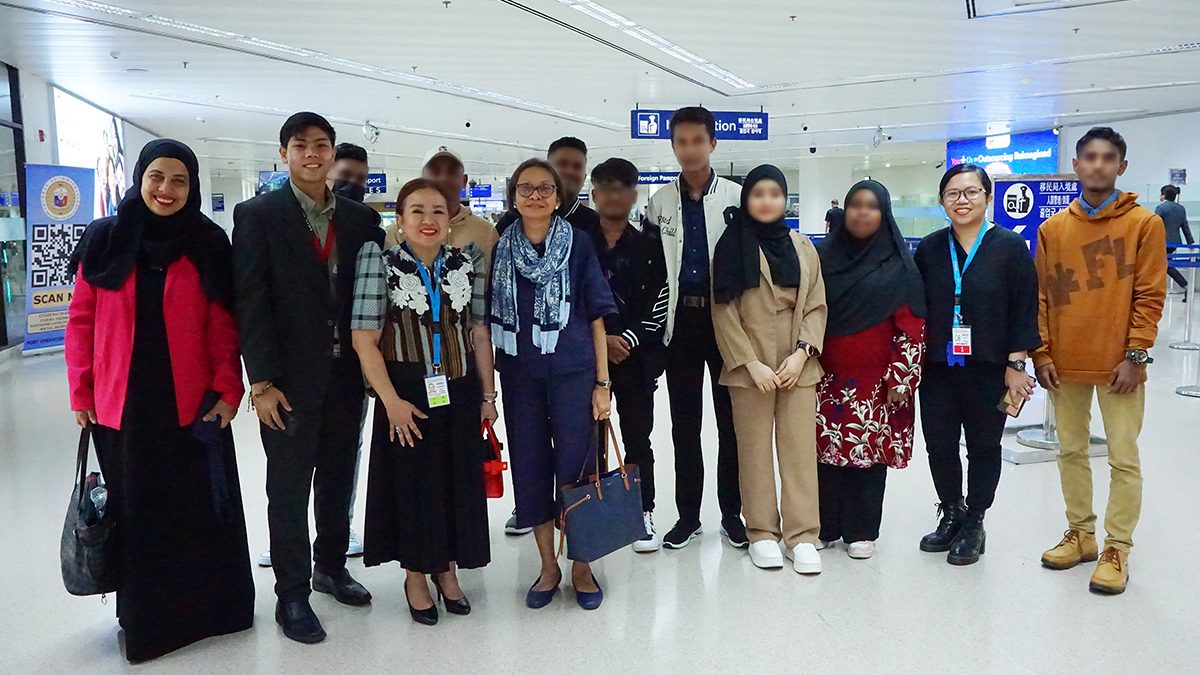BY KOON PENG OOI, PROJECTS MANAGER AND IRIS TAYAG, UNHCR

APC members, Kathleen Chew and Stanley Tan, and ACF donor, Janet Lim, recently supported a second cohort of Rohingya refugee students in Malaysia to pursue higher education in the Philippines through the UNHCR’s Complementary Pathways (CPath) programme. The CPath programme provides refugees with access to protection services and a safe, regulated entry and residence in the country. It also aims to enhance their skills and self-reliance, guiding them towards the cessation of their refugee status.
What distinguishes this initiative from other scholarship programmes is its unique offering for refugee students to stay in the Philippines upon graduation with the right to work, should they choose to do so. This option holds particular significance, given the typically limited opportunities provided within their country of asylum’s framework.
APC’s Koon Peng Ooi (KP) recently sat down with Iris Tayag (IT) from UNHCR to understand how this programme came about and explore the UNHCR’s plans.
KP: Hi Iris, could you share how the Complementary Pathways (CPath) project came together? What made the Philippine government commit to seeing this through?
IT: Sure, Koon Peng. After a series of discussions with different stakeholders in preparation for the inaugural Global Refugee Forum in 2019, the Philippine Government made a pledge to explore ways to admit refugees into the country. Recognising the persecution resulting in limited access to life-saving services faced by Rohingyas, as well as the Philippines’ humanitarian tradition and open-door policy, the Government made sure that this pledge is acted upon and that access to tertiary education will be provided to qualified Rohingya youth.
KP: Many who have heard of this programme may not realise that this is a whole-of-government effort. This means that there are ten ministries that each had to play their part in order to make this happen. Can you tell us more about that, and what are some of the lessons [the UNHCR] learned in galvanizing various government departments this way?
IT: UNHCR works with States to ensure that the rights of forcibly displaced and stateless persons are upheld. We collaborated with the Government of the Philippines in the development and institutionalization of an inter-agency mechanism that supports the same. The Government has also deemed it appropriate to further establish one inter-agency mechanism intended for the CPath programme to ensure that services and assistance (documentation, health and welfare, education and skills training, and employment and livelihood) may be provided by relevant agencies.
This has proven to be an effective way to assure partners from the academia and private sector that the Government is leading and supporting this initiative. Of course, the partners from the education sector are prime movers as well; without the scholarships and accommodations they are providing access to, Rohingya refugees would not be able to access tertiary education—a critical pathway leading to self-reliance and local integration, thus finding a way to possibly end their refugee status. Thus, the Philippines is essentially implementing a whole-of-society approach, backed by a whole-of-government approach.

KP: There have been 14 students so far that have arrived in the Philippines under this programme—6 last year, and 8 recently in August 2023. How are they adapting?
The students come from different backgrounds, thus how fast they can adapt to the formal education system and the Philippines also varies. In different conversations with the scholars in various engagements, they mention that though most of them really do miss their homes, they are very grateful for this opportunity. Some have made it to the Honors List of their respective courses, and all students have been able to find new friends they can hang out with, and journey with through their university life. All of them have shared that they feel safe here in the Philippines.
KP: Compared to the first cohort, the UNHCR successfully expanded the programme to include more universities, thereby attracting more university spots and co-funding. What is the plan from here? Is there interest by the Philippine Government to scale the programme?
IT: We hope to further expand the implementation of the programme and create more spaces of “Hope away from Home” for Rohingya refugees. Currently, we are working with the government in setting up advocacy meetings with different stakeholders, especially in the academia, to expand the network of partners supporting the programme. The goal is to continuously implement a whole-of-society approach to ensure the sustainability and success of the programme.
KP: Will the UNHCR spotlight this programme as a successful model to encourage other countries in the world to adopt this model? What’s the process like?
IT: CPath is one of the priorities of the High Commissioner, especially in the development and pursuit of the end of their refugee status or what is called durable solutions for refugees. With these pathways, refugees would also be able to access formal channels, such as scholarships and employment opportunities.
While the CPath model in the Philippines is considered a good example of a whole-of-society approach backed by the whole-of-government approach, the implementation of CPath really depends on existing mechanisms in different countries—both in sending and receiving countries. The goal is to implement the pathways in as many States and institutions as possible to create access for refugees needing protection beyond what their countries of asylum can provide.
KP: Finally, what are 2-3 things you’d like members of the APC Community to know about this programme?
IT: First, even in its early stages, we can already see that the programme is transformative for refugees. It not only changes the lives of refugees themselves, but also those of their families, and eventually their communities. This change is not just economical, but also a cultural one—for example, as more girls and women are provided with access to education, they become more empowered to play bigger roles in society.
Second, this is one of the concrete ways to end one’s refugee status, as it brings refugees closer to durable solutions.
Finally, the CPath programme can be successful through a whole-of-society approach and will need all stakeholders to contribute. If not for the contribution of several APC members, the second batch could have been much smaller, making it less impactful. UNHCR hopes to continue and expand this partnership with APC members and its community.
